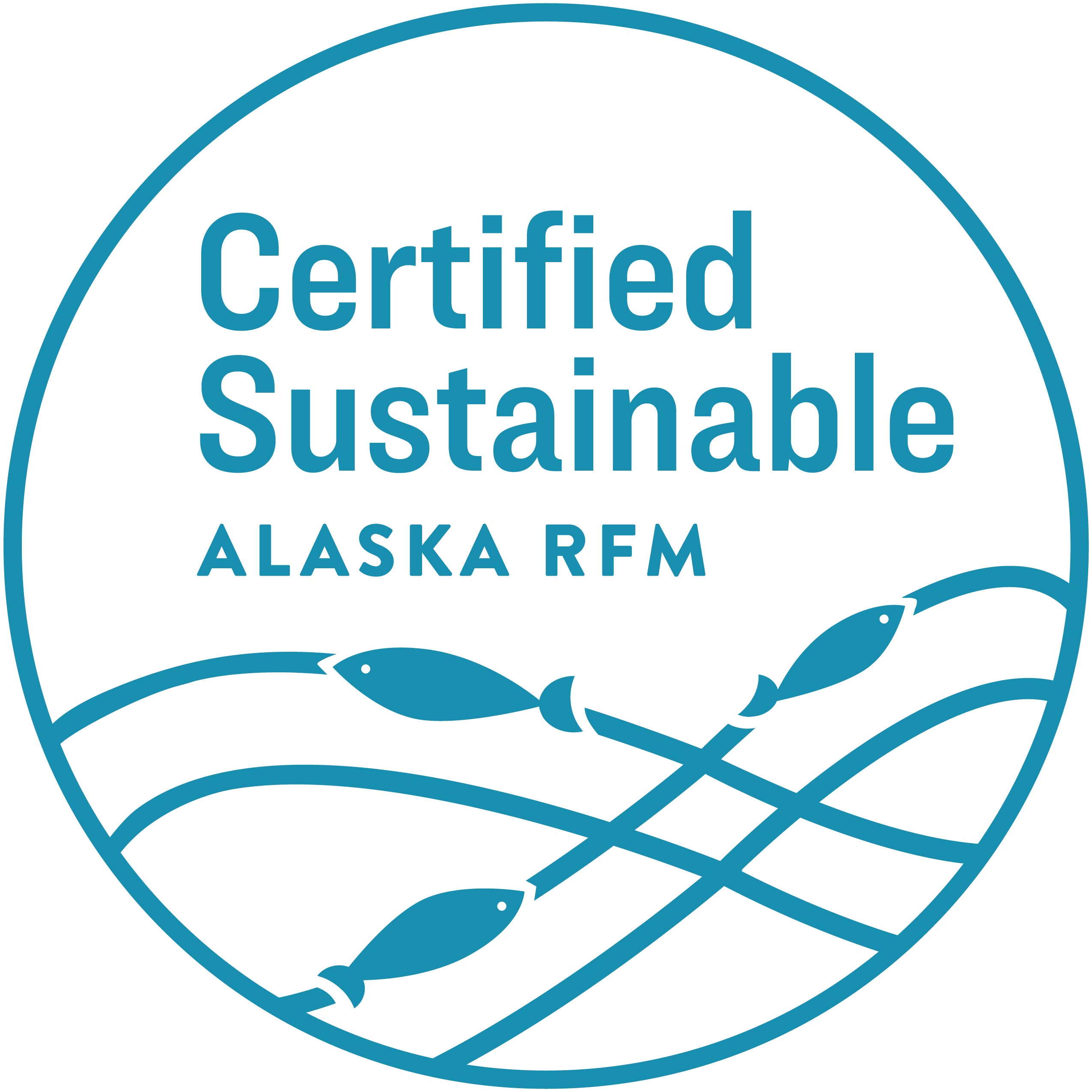Whether at a restaurant or store, it is nice to have seafood choices, and Alaska is a brand that many consumers trust. The Alaska Seafood Marketing Institute has established through years of research that consumers are more likely to buy seafood when they see the word Alaska. An April 2020 Edelman report on consumer expectations also suggests that in a post-covid-19 era, there will be more scrutiny of where our food comes from, and consumers want transparency in the sea-to-table process. So what does this all mean? Source matters!
As a fisherman, I take tremendous pride in my work and the important role fishing plays in food security. Certification isn’t something I think about often, but I know most of our fisheries have been certified for many years. Almost 20 years ago, Alaska salmon was the first to receive Marine Stewardship Council certification. It made sense for Alaska to have its long-standing practice of managing fisheries responsibly receive official recognition. Other Alaska fisheries followed, and certification was highlighted in selling our fish.
Nowadays though, certification is the norm. It is pretty much required to sell seafood in markets around the world. MSC’s growth could be good for the overall ocean conservation movement, but it could also undermine Alaska’s unique spot in the marketplace. Other certification programs have sprung up, confusing buyers about what fish are truly from well-managed fisheries. We needed new ways to cut through the confusion.
Seeing this shortcoming, in 2010, ASMI consulted fishery and industry experts to develop a certification program that provides a true metric of sustainability to buyers. The ASMI board of directors set out the following goals for the program:
- Independent, third party and formally accredited;
- Directly based on the United Nations’ Food and Agriculture Organization’s Code of Conduct for Responsible Fisheries;
- Verifies responsible fisheries management performance, which facilitates market access for seafood;
- Preserves the Alaska origin;
- Cost-effective for supply chain;
- Provides a consumer facing eco-label;
- Provides the Alaska industry, processors and fishermen access to certifications without added costs, not a pay-to-play model.
Alaska salmon also became RFM’s first certified fishery in 2011. Today nine Alaska fisheries hold RFM certifications, some include multiple species.
As with any new program, RFM experienced many growing pains since 2011, yet the leadership remained committed to the program, and the work is paying off. Alaska RFM achieved a major accomplishment in 2016, when it became the first certification program benchmarked by the Global Sustainable Seafood Initiative, the only global fishery sustainability certification benchmarking program. Today Alaska’s RFM program is credible and respected by stakeholders around the world.
On July 1, Alaska RFM began a new chapter and transitioned ownership from ASMI to the Certified Seafood Collaborative, an independent foundation board. This change will allow the program to capitalize on some exciting opportunities, such as collaborations with existing RFM programs in Iceland and the Gulf Coast states, as well as with Norway and Denmark, which are developing their own RFM programs. These regions, like Alaska, are proud of their seafood, and an RFM-based certification program allows them to offer certified seafood while emphasizing origin. ASMI will continue to support Alaska seafood globally, including marketing the RFM program. ASMI’s marketing expertise and knowledge will be a big advantage to the program as it takes this next step.
Alaska RFM has progressed tremendously since its inception, yet there are a couple areas where the program has never wavered, and as a fisherman I appreciate this. The program is governed by people who understand Alaska fisheries and who recognize that certification isn’t what makes our fisheries sustainable. Rather, certification is merely a verification that we are doing what we say we are when it comes to managing our fisheries. This is a major distinction from other programs, and for Alaska it is critical. Also, the program’s leadership is transparent and accessible. It is reassuring to know that should any of my fellow fishermen or I have a question or concern, the board members are reachable willing to talk.
A versatile and modern RFM logo launched last year, and the board remained committed to not charging logo license fees, a major difference between RFM and other programs. I know the power of origin when it comes to purchasing food, and people want to connect to the source of their food. The new logo helps prioritize Alaska and U.S. seafood.
I’ve come to appreciate that certification provides the highest level of assurance that our seafood is verified as sustainable, responsibly harvested, and is traceable back to its source. I for one, am very happy to have the choice of using the Alaska RFM certification program and encourage you to take a closer look!
Matt Alward is the president of United Fishermen of Alaska. He lives in Homer, Alaska, seines Kodiak salmon and is a Gulf of Alaska halibut quota holder.
Looking for more?
- Our FREE online membership offers access to our monthly digital edition, free reports, free quarterly magazine and discussion forums.
- For $14.95 a year, get all that plus access to our digital issue archives.
- For $15.95 a year, get all that plus the print edition of National Fisherman.







